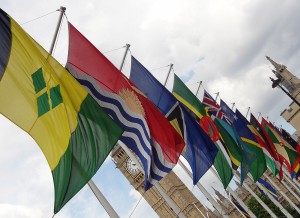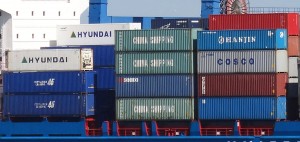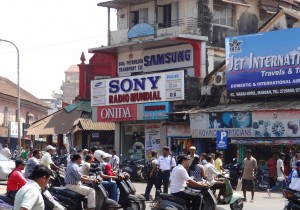 With globalisation, more and more businesses have found it beneficial to ‘go global’. There are many reasons why a firm might choose to expand its production or market to other countries and one particular advantage is cutting costs in the manufacturing of products.
With globalisation, more and more businesses have found it beneficial to ‘go global’. There are many reasons why a firm might choose to expand its production or market to other countries and one particular advantage is cutting costs in the manufacturing of products.
Countries such as China and India have become leaders in production. Look at many of the items you own – I’m sure you’ll see a ‘Made in China’ or ‘Made in India’ amongst them. These fast emerging countries were highly sought after as places to produce due to much cheaper production costs. This advantage led to Western companies outsourcing much of their manufacturing base to China, as a means of retaining a competitive advantage.
However, the cost advantages that China boasted are now less significant and we may be about to see the emergence of a new manufacturing hub. Other countries that are further behind the BRICS in the development process now have cost advantages over places like China and so we may see another transfer of manufacturing to other parts of the world.
 When splitting up a supply chain to gain cost advantages a key consideration is the extent to which you lose control. Communication and co-ordination issues can emerge when design takes place in one country; production in another and then the products are sold around the world. When cost differences are huge, these problems can be overlooked, as what they might cost you in terms of lost time etc. is easily made up by savings through cheaper labour.
When splitting up a supply chain to gain cost advantages a key consideration is the extent to which you lose control. Communication and co-ordination issues can emerge when design takes place in one country; production in another and then the products are sold around the world. When cost differences are huge, these problems can be overlooked, as what they might cost you in terms of lost time etc. is easily made up by savings through cheaper labour.
However, when the cost advantages of production in China shrink, companies are still left with the problems of communication and co-ordination. These now represent more significant costs that could be reduced were production to revert to the country of design or if production were to be moved to an even cheaper country.
The following article from BBC News considers the issues surrounding the supply chain and how businesses may benefit from more collaboration.
Better collaboration lets businesses take back the supply chain BBC News, Alastair Sorbie (15/6/12)
Questions
- What are the arguments for becoming a multinational?
- Why do host countries, such as the BRICS accept inward investment? What do they gain from it?
- Explain how the product life cycle can affect the profitability of a MNC and how the company might respond.
- What are the disadvantages to a MNC from ‘going global’?
- What are the problems faced by developing countries acting as host nations?
- How has technology affected both big and small businesses?
 My son Andrew Sloman (see also) is currently in Goa. My wife Alison and I went to visit him over half term – our first trip to India. Goa is a beautiful state, with wonderful beaches, fantastic food and perfect weather in February. But inland from this tourist haven lies an environmental disaster caused by the open-cast extraction of iron ore.
My son Andrew Sloman (see also) is currently in Goa. My wife Alison and I went to visit him over half term – our first trip to India. Goa is a beautiful state, with wonderful beaches, fantastic food and perfect weather in February. But inland from this tourist haven lies an environmental disaster caused by the open-cast extraction of iron ore.
This tiny state by Indian standards produces more than 60% of India’s iron ore exports. Whilst, along with tourism, the iron ore industry has been one of the largest contributors to the Goan economy, its environmental footprint is massive. Deforestation and water and air pollution are just three of the environmental externalities.
So should a cap be placed on the amount of iron ore that is mined? Should the industry be taxed more heavily? Should tough environmental standards be imposed on the industry? Or should it simply be allowed to continue, given its large contribution to the Goan economy? Or, at the other extreme, should the industry be closed? The linked article looks at some of the issues. Try to identify, as an economist, what information you would require in order to come to a conclusion to these questions.
Greens’ shout for cap on iron ore mining falls on deaf ears Times of India, Paul Fernandes (28/2/12)
Questions
- What negative externalities are involved with the Goan iron ore industry? Are there any positive externalities?
- What difficulties are there in measuring the negative externalities?
- How would you set about doing a cost–benefit analysis of (a) expanding the Goan iron ore industry; (b) shutting it?
- Explain the following: “The net present value of the opportunity cost for 25 years at 12% social discount rate of giving it up is greater than its environmental cost by Rs 14,449 crore, the report states.” (A crore is 10 million and Rs is the symbol for an Indian Rupee, where £1 = approximately 78 rupees.)
- What difficulties are there in attempting to take distribution into account when doing a cost–benefit analysis?
There are seven Indian airlines: state-owned Air India and six private carriers. Since the onset of recession they have all been making losses and were considering a one-day ‘strike’ when services would be removed. The aim was to force the Indian government to reduce fuel and airport taxes.
Do the losses suggest that there is overcapacity in the Indian airline market? Does it matter if, during the current recession, some airlines go out of business? Are bankruptcies necessary if the surviving carriers are to be stimulated to make cost savings and are to achieve sufficient economies of scale? Or should governments offer support to struggling airlines? Is oligopoly the best market structure for such an industry and, if so, how can collusion be avoided? The following articles consider these questions.
How many airlines do we need? Business Line (The Hindu) (4/8/09)
Indian airlines call off Aug 18 strike Forbes (3/8/09)
When corporations capture the state Rediff Business (7/8/09) (see middle part of article)
Blaming everyone else Indian Express (3/8/09)
India’s air carriers spin loss riddle Asia Times Online (8/8/09)
A strategic vision for Indian aviation The Economic Times (8/8/09)
Flight to value The Economist (6/8/09)
Federation of Indian Airlines
Questions
- Describe the features of the market structure in which Indian airlines operate.
- Is the Federation of Indian Airlines a cartel?
- Should (a) any; (b) all Indian airlines be given government support, and, if so, what form should the support take? Should Air India be treated differently from the other Indian airlines? Explain your answer.
- Is it in Air India’s long-term interests to embark on a price war with the other Indian airlines?
- Is oligopoly necessarily the optimal market structure for a capital-intensive industry?
 With globalisation, more and more businesses have found it beneficial to ‘go global’. There are many reasons why a firm might choose to expand its production or market to other countries and one particular advantage is cutting costs in the manufacturing of products.
With globalisation, more and more businesses have found it beneficial to ‘go global’. There are many reasons why a firm might choose to expand its production or market to other countries and one particular advantage is cutting costs in the manufacturing of products. When splitting up a supply chain to gain cost advantages a key consideration is the extent to which you lose control. Communication and co-ordination issues can emerge when design takes place in one country; production in another and then the products are sold around the world. When cost differences are huge, these problems can be overlooked, as what they might cost you in terms of lost time etc. is easily made up by savings through cheaper labour.
When splitting up a supply chain to gain cost advantages a key consideration is the extent to which you lose control. Communication and co-ordination issues can emerge when design takes place in one country; production in another and then the products are sold around the world. When cost differences are huge, these problems can be overlooked, as what they might cost you in terms of lost time etc. is easily made up by savings through cheaper labour.